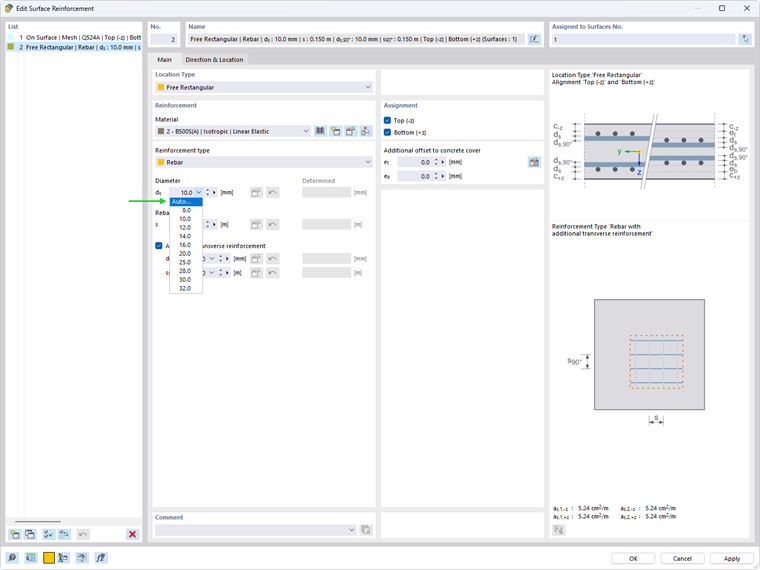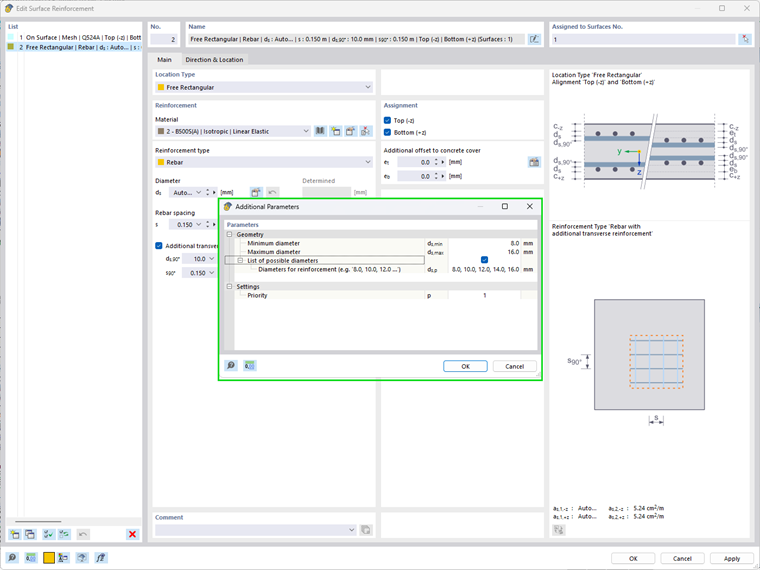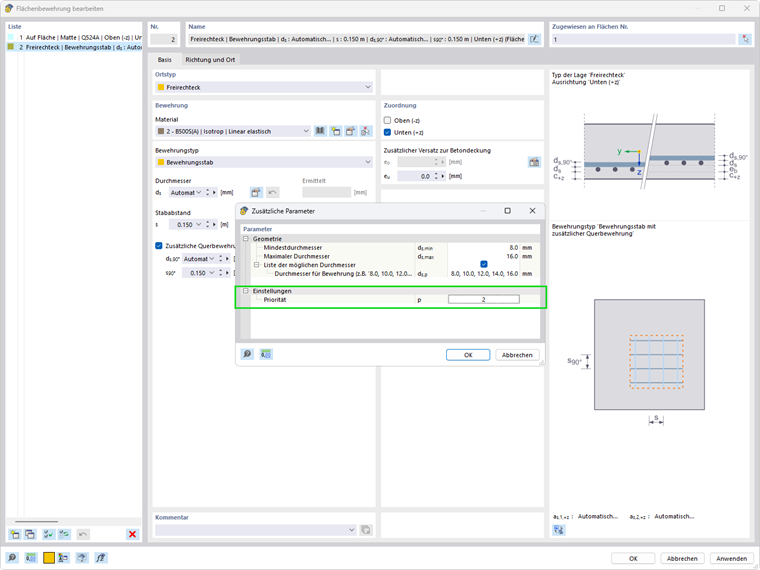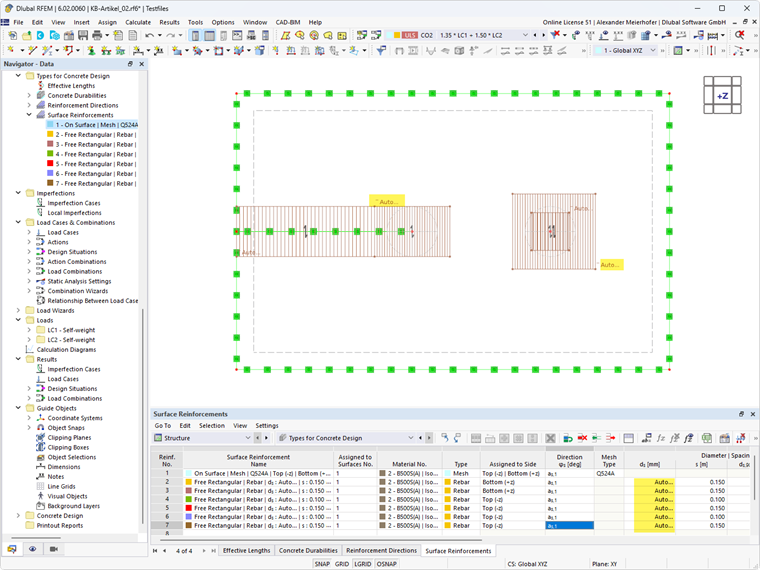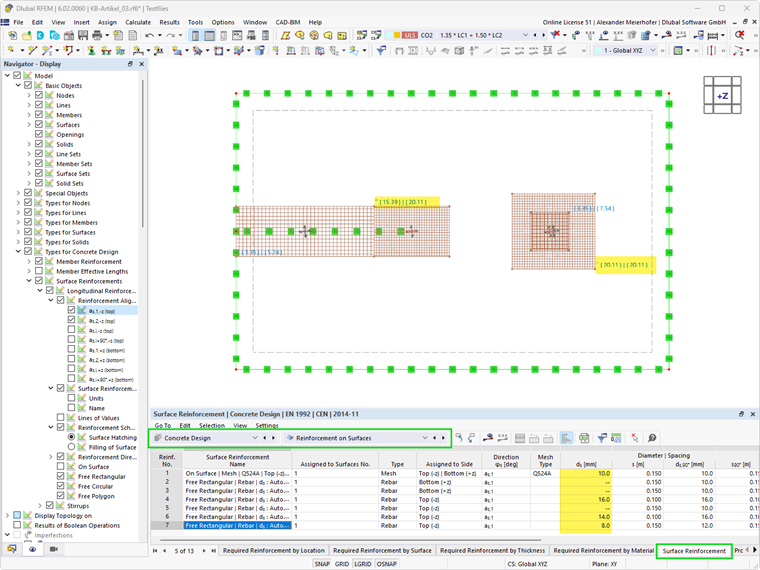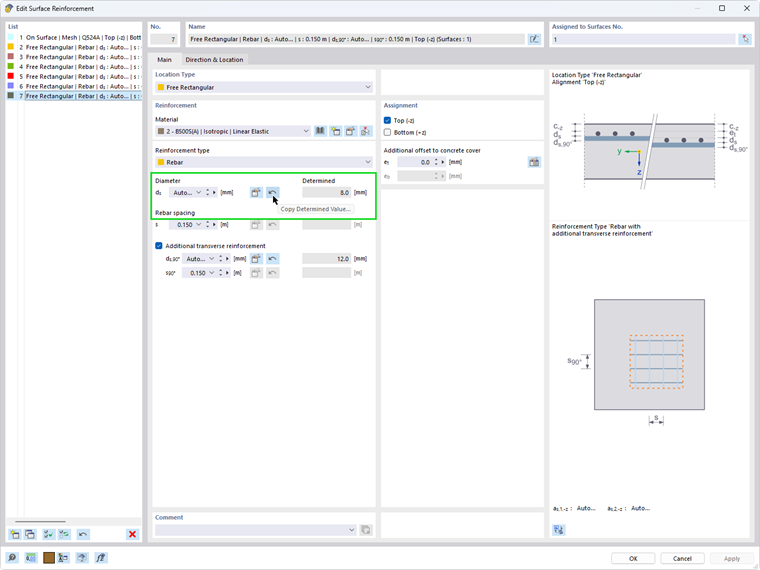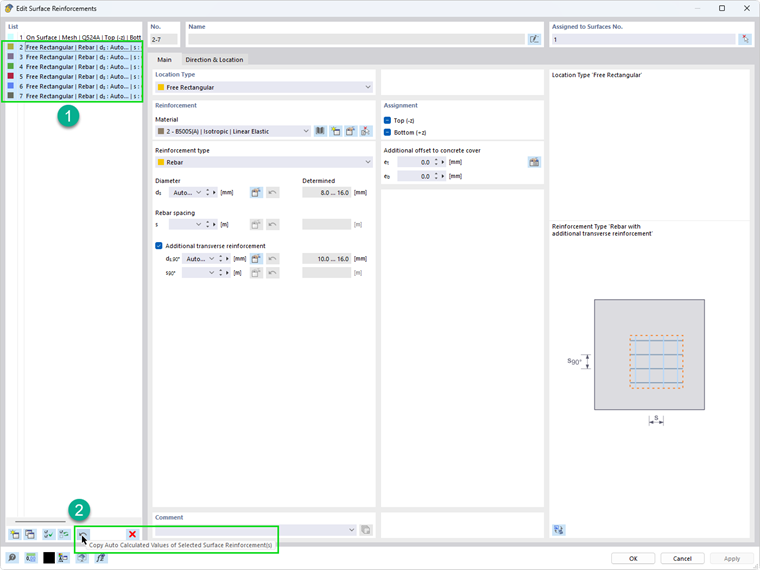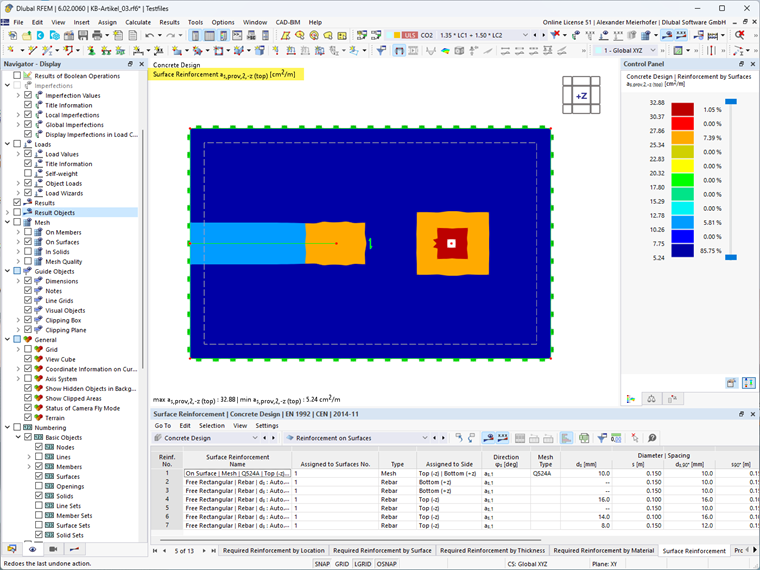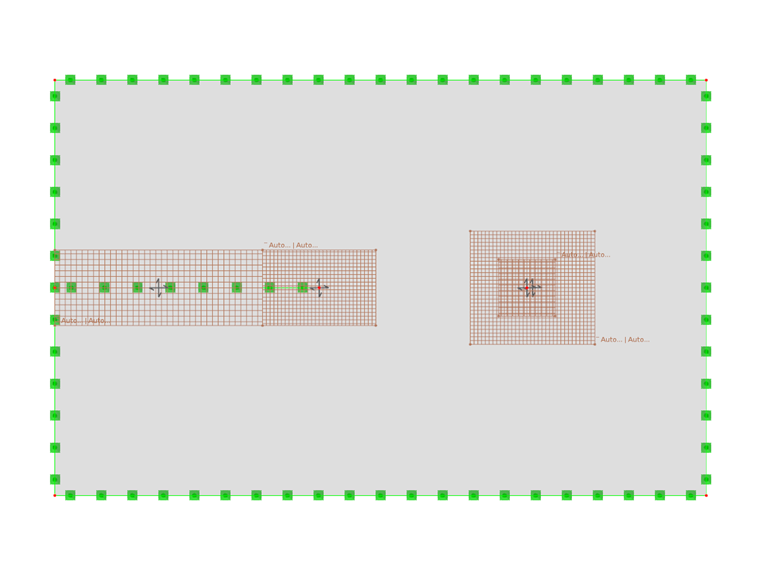When starting a reinforced concrete design for ceilings or walls, you usually do not know exactly how much reinforcement needs to be arranged in the surfaces. After performing a first design run considering a previously estimated reinforcement area or a basic amount of reinforcement, the second step is to adapt the existing surface reinforcement to the calculated required reinforcement area. The result output for the uncovered reinforcement area is very helpful. The reinforcement area is adjusted either by adjusting the basic reinforcement or by arranging additional reinforcement. A second calculation run is then started considering the adjusted reinforcement area and the design checks are performed. It may well be the case that the inner lever arm is reduced due to the additionally defined surface reinforcements and that the required amount of reinforcement increases. This requires a further adjustment of the reinforcement, and the reinforced concrete design must be performed again.
With the function for the automatic design process to find the appropriate surface reinforcement, the program takes off the previously described steps needed for adjusting the reinforcement. The required adjustments to the amount of reinforcement are made automatically according to the user's specifications. To cover the required reinforcement, for example, it is possible to generate the existing basic reinforcement, or additional reinforcement can be generated also automatically on required locations. In the following, the input dialog box is described, and possible applications are shown using various examples.
Defining Design Parameters
In the "Surface Reinforcement" dialog box, you can find the "Auto..." entry in the list box for the rebar diameter and spacing for setting the automatic design process.
Depending on the reinforcement direction, the design function can be used either for the rebar diameter or for the rebar spacing. If you select the "Auto ..." option, an input dialog box for additional design parameters opens automatically. The upper and lower limit values are specified. Optionally, you can also specify a list for allowed values. This way, it can be ensured, for example, for rebar diameters that only diameters from the available delivery program are used.
In addition, the priority can be used to control the ranking of the reinforcement in the design function. In the course of the design process, all reinforcements of priority 1 are used in the first calculation run and the program tries to cover the difference between the required and the provided reinforcement area (uncovered reinforcement area). If it is not possible to achieve the reinforcement difference with the specified design parameters, the maximum possible amount of reinforcement is inserted and the calculation of the reinforced concrete design is restarted. This results in a new "uncovered reinforcement". The remaining reinforcement is now attempted to be covered with the reinforcement areas of design priority 2. This design process is performend until either the reinforcement has been completely covered or the highest design priority has been achieved. Using the design priority, a curtailment of the reinforcement amount is possible.
Application Example
The application of the automatic reinforcement design process used for surface reinforcements is shown below on a floor slab. The program's task is to automatically find the reinforcement amount (rebar diameter) of the upper additional reinforcement above the inner wall and the inner column using the automatic design function. A "Free Rectangular Reinforcement" is defined above the column areas and the design function is activated considering possible rebar diameters of 8 to 16 mm. A second surface reinforcement of design priority 2 is placed above the inner column. In this way, a curtailed reinforcement is determined, if necessary.
In the tables and graphics, the surface reinforcement is displayed with an "Auto..." indication as long as the calculation has not yet been started. This means that you can quickly see to which reinforcement area the design function has been assigned.
After the concrete design check and the design process have been carried out, the rebar diameters or spacings found are displayed in the "Surface Reinforcement" result table in the Concrete Design add-on. Reinforcement directions that are not needed are shown by "--" in the result table.
In the graphic display of the surface reinforcement, the reinforcement areas determined by the design process are also shown in brackets. The rebar diameters/spacings determined in the design process are also shown in the Surface Reinforcement dialog box. Here, it is also possible to accept the determined rebar diameters as input and to complete the design process for the surface reinforcement.
The rebar diameters/spacings determined by the program can also be transferred in one go to the input fields for multiple selection or for all surface reinforcements.
In the following image, the automatically designed amount of reinforcement is shown graphically. The graduated reinforcement carried out above the inner column can be seen very clearly here.
Summary
The automatic design process of the provided surface reinforcement makes it much easier to enter or define a surface reinforcement. Due to this function, the program automatically determines the required rebar diameters or spacing of the reinforcement area depending on the uncovered reinforcement area.
